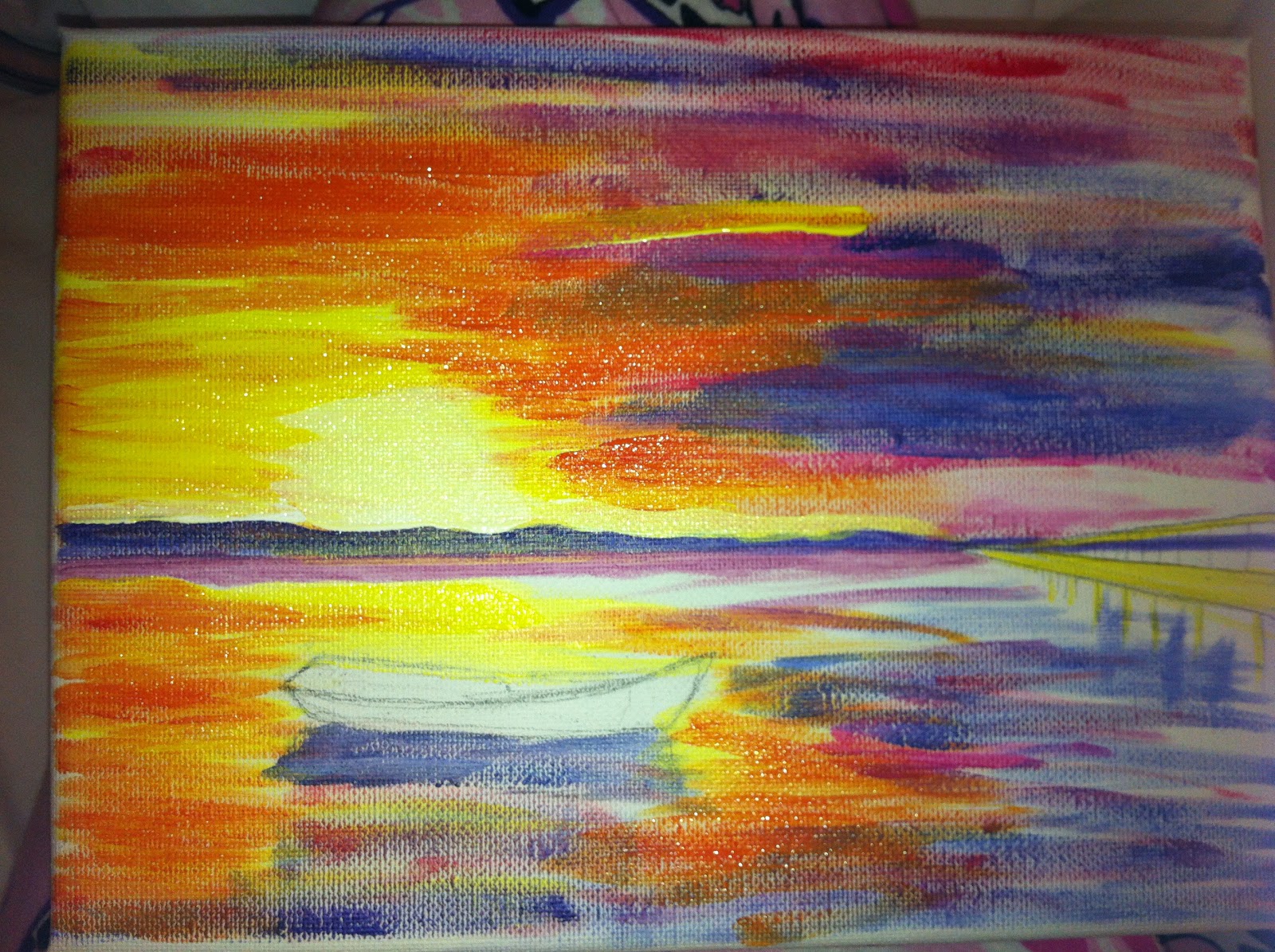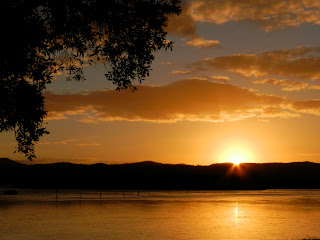I'm not quite sure where i'm going with this one. Its of a place called Lion Island and the image I've painted almost gives a moonlight effect (however that was not the intention). We shall see where this goes :)
LizInk Creations
Lizink Creations is a blog designed to share artistic and creative ideas in an educational and explorative manner.
Wednesday, 6 February 2013
My New Style
So i decided to paint a picture for my boyfriend of a beautiful place we go walking on quite often. He really liked it... i hope!
The trick is building up layers... starting with putting ideas of colours down and slowly adding different shades. I try to focus on warm colours and cool colours separately.

Wednesday, 19 September 2012
Abstract Art
Wikipedia, sums up abstract art really well... "Abstract art uses a visual language of form, color and line to create a composition which may exist with a degree of independence from visual references in the world."
A little exersize i like to do, is ill look around me and find a series of objects. Then i select areas of the object, as if you "zoom-in" on them, and draw it on the page and keep adding different shapes and textures. Eventually, you will come up with somewhere very abstract that doesn't look like the objects you started with but gives you a sort of, template, to work with!
Here are two websites where it takes you through some easy steps to painting or drawing abstract art:
http://www.wikihow.com/Create-a-Random-Abstract-Drawing
http://painting.about.com/od/stepbysteppaintingdemos/ss/KarenDayVath_7.htm
http://www.art-is-fun.com/how-to-paint-abstract-art.html
A little exersize i like to do, is ill look around me and find a series of objects. Then i select areas of the object, as if you "zoom-in" on them, and draw it on the page and keep adding different shapes and textures. Eventually, you will come up with somewhere very abstract that doesn't look like the objects you started with but gives you a sort of, template, to work with!
_________
Here are two websites where it takes you through some easy steps to painting or drawing abstract art:
http://www.wikihow.com/Create-a-Random-Abstract-Drawing
http://painting.about.com/od/stepbysteppaintingdemos/ss/KarenDayVath_7.htm
http://www.art-is-fun.com/how-to-paint-abstract-art.html
Still Waters & Blending
Here are two paintings using acrylics that i have done recently..
The most important feature of both is the blending of colours. Learning how to blend is probably one of the most important lessons to be learnt when working with paints. Blending is the gradual transition from one colour to another.
Take a look at these images.
This image is blending colours everywhere!
It is a useful excersize to get some paints out and on a blank sheet of paper, try mixing colours and blending colours. If you look at any given image, there are almost always going to be darker shades of a colour and lighter shades of a colour. Learning how to paint this is a useful skill and will enhance your painting technique.
Try looking at the colour wheel. Usually colours on opposites, when mixed, create nothing but a browny colour so unless that is what you want, try and avoid that.
Here is a link that teaches the basics in blending.
Oil Pastels
The are similar to pastels and crayons except they are more difficult to blend.
You can use Oil Pastels on almost any surface such as paper, wood, metal, hardboard, canvas and glass.
A common technique is called layering, where you build up layers of colour creating a thicker texture. Turps is a liquid that some use to blend oil pastels, this allows a similar effect as the blending of watercolour paints.
One thing I've found is that oil pastels work really well on black paper.
Here is a duck i did on black paper:
Here is a link to tips and ideas on starting with oil pastels:
Tuesday, 18 September 2012
Photography
The Rule of Thirds is an important guideline to follow when taking any shot.
It divides the image up into three vertical lines and three horizontal lines and states that the subject of focal point of the photograph should be where the lines meet. (See the red dots above)
It creates interest in the main subject and believe it or not, when we are looking at an image the first thing studies have proven that we look at is not the centre. We usually follow the points in the image.
Here are some examples...
Now, see if you can find the rule of thirds in these images...
Here are some images i have taken...

There is always a time for breaking the rules. This is an image i took in Auckland, NZ. When i took this shot i was actually running and not thinking about the rule of thirds. After getting feedback about the image, a lot of people thought it was the best one i took. So there is always a time for being creative and making things interesting.
Subscribe to:
Comments (Atom)





































